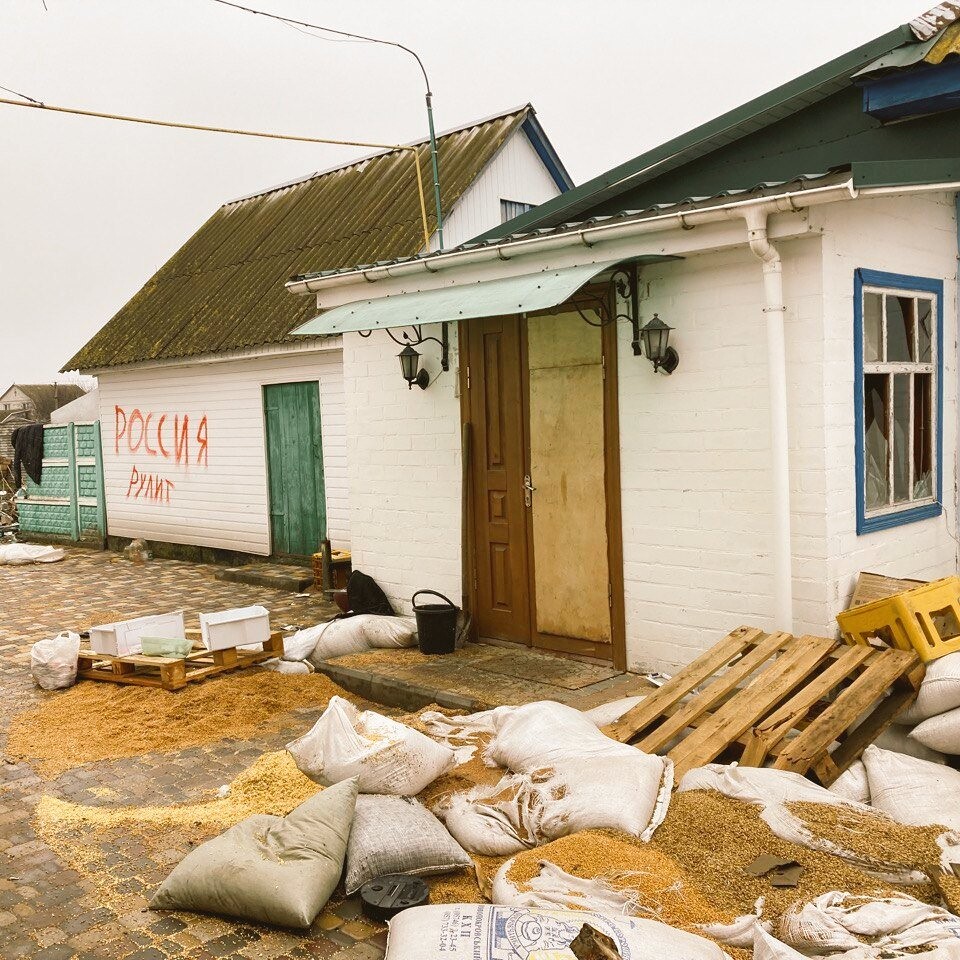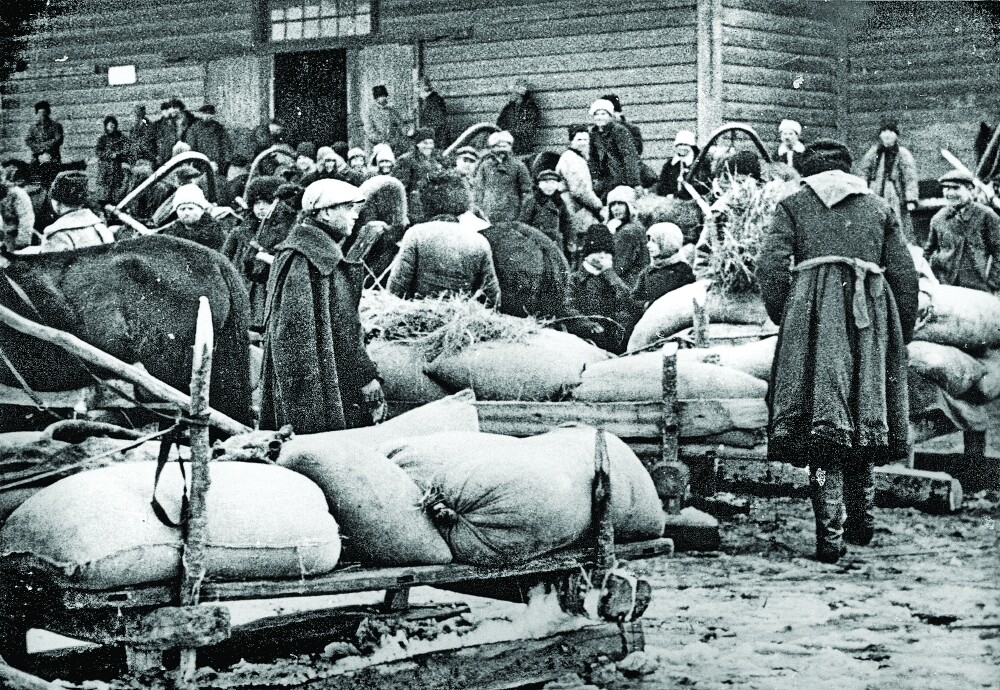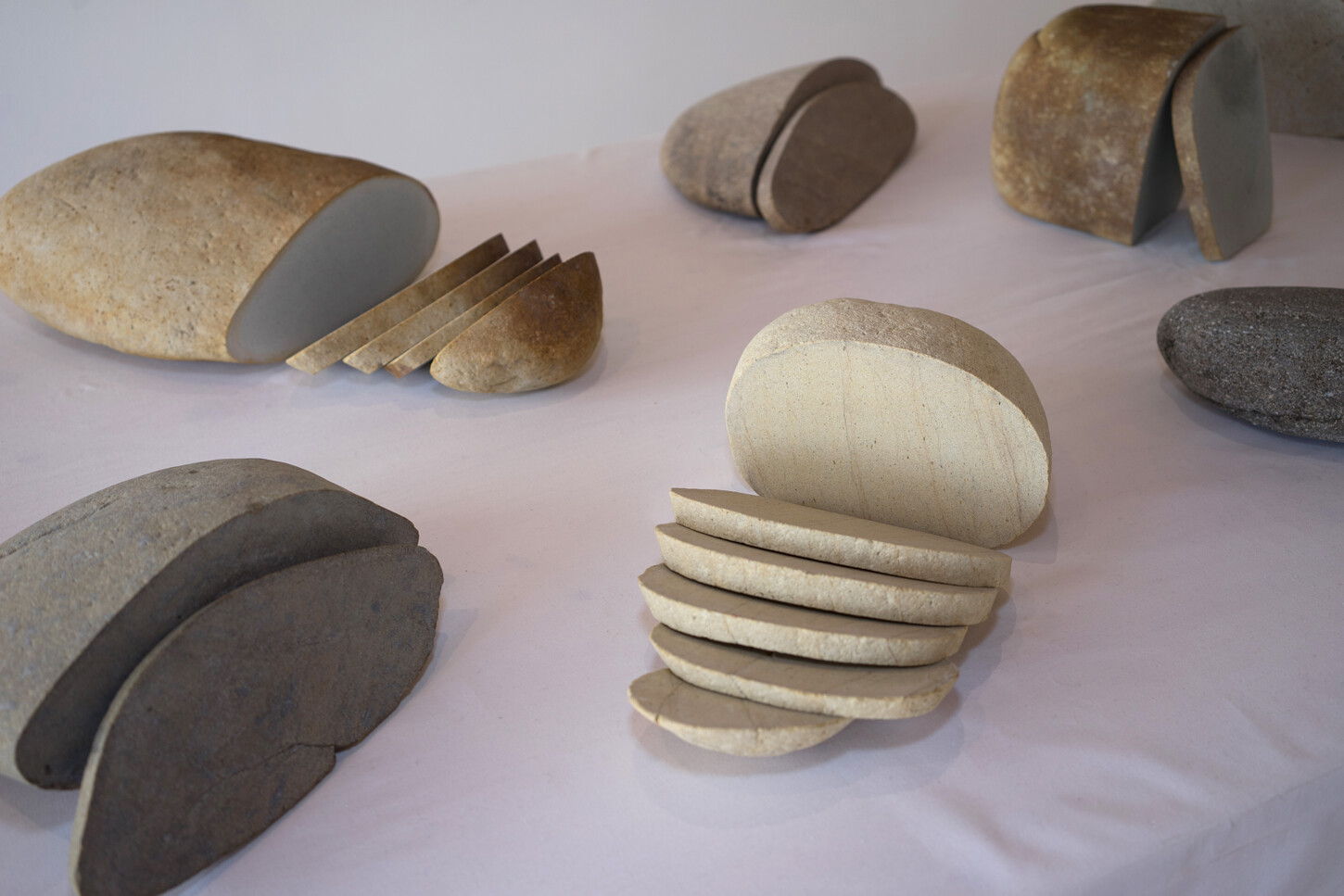I’m starting to work on this text in a cafe. The noise of the coffee machine, the sound of voices, the clatter of dishes, and the music mix together in the background of my working day. Like me, some of the other customers work while having a cup of coffee. Others customers chat with friends or eat a piece of cake. Sometimes, it’s difficult to realize how deeply food and food-related practices are entangled with our social interactions. Food is an integral part of human culture and identity. But all those food-based rituals rely on food being easy to acquire in sufficient quantities. A lack of food not only threatens human survival as such but also disrupts cultural rituals. Hunger reduces a person to their body, to exhausted flesh whose existence becomes centered around satisfying very basic needs. This experience is impossible to imagine for those living in relative comfort. But according to UN World Food Programme, 276 million people worldwide were already facing acute hunger at the start of 2022.1
During various periods of history, various societies have suffered from a devastating lack of food. In 1932–33, Soviet Ukraine was swept by a terrifying wave of hunger as the Soviet government starved to death up to four million people, mostly peasants, with an artificial famine. Organized and armed brigades confiscated harvests, which, along with restrictions on villagers’ movements, led to mass starvation and death. Dead bodies littered the streets and corpses were buried in mass graves. This period was later called “the Holodomor”—from the Ukrainian expression “moryty holodom,” to starve someone to death. Almost until the very end of the Soviet state’s existence, any mention of the famine was suppressed by the totalitarian regime, which pretended it had never happened.
Despite the attempts to cover up this starvation (or maybe precisely because of it), the famine left a deep and traumatic impression on the collective memory of Ukrainian society. The first-hand experiences of those who witnessed the Holodomor—its victims and survivors—is the focus of Project MARIA by Canadian-Ukrainian artist Lesia Maruschak. Through a series of visual installations, she tells the story of a girl name Maria who managed to survive the Holodomor and emigrate to Canada while millions of others died. Maruschak edits and reworks archival photographs. The resulting images are blurred, ghostly, and poetic. The visual language appeals to the spectator’s emotions, empathy, and imagination. Maruschak says about her project that it “aims to create a memorial which facilitates the construction of collective memory.” She continues:
I would construct a mobile memorial that avoids the physical and monolithic language and form of traditional memorials by making a mobile work through which the active participation of audiences from a range of locations and cultures works to unconceal knowledge of this event.2
While avoiding the monumentality of traditional memorials, Project MARIA still repeats in many ways the established imagery used in official Holodomor commemoration. The artist chooses a small girl as the main protagonist of her project. The protagonist’s age and gender imply her total inability to resist the harm that is being inflicted on a wider group of people of different ages and genders. A child—moreover a girl—cannot fight back, becoming a passive and silent victim of the totalitarian regime. A similar focus on the most vulnerable group of victims can be seen in, for example, a sculpture in front of the National Museum of the Holodomor-Genocide in Kyiv: a thin exhausted girl stands holding ears of wheat in her small hand.3
It is quite common for the Ukrainian commemorative tradition to use the image of a woman or a girl to embody the suffering of the whole nation. In academic and journalistic discourses, the horrors of hunger are often illustrated by eerie stories about women on the brink of desperation and images of exhausted women or girls.4 Women are thus portrayed mostly as silent victims of tragic historical circumstances. But the actual history of the Holodomor includes numerous cases of active resistance to forced collectivization in which women played a crucial role. It was precisely because of the numeric predominance of women among the participants of some of those peasant revolts that they were called “Bab’i bunty” (“peasant women’s protests”) in official documents.5
But the story of Maria can also be read differently: even though the project has a clear commemorative intention, its female protagonist survived. For women and girls, survival in these inhuman conditions meant existential victory over the regime. Maria did not only manage to survive: she emigrated to Canada and built herself a new life there.
Collective traumas—wars, genocides, mass hunger—do not remain confined within the experience of the generation that endures these traumas directly. They transform and are transmitted—through oral stories, habits, and behaviors—to subsequent generations, who absorb them often without even realizing it. Marianne Hirsch calls this indirect traumatic memory “postmemory.”6 Traces of traumatic memory about the Holodomor are still present in everyday practices of my own generation, the third one since the originating event. These traces are the focus of a project I did with Andrii Dostliev called I still feel sorry when I throw away food – Grandma used to tell me stories about the Holodomor.
Traumatic traces of the Holodomor can be found in certain attitudes toward food in Ukraine, especially the strong reluctance to throw away even tiny scraps of food. Despite the fact that twenty-first century Ukrainians, even during the worst of times, have always had something to eat, throwing away food scraps still produces a strong feeling of shame and guilt.
To better analyze these feelings, for several months Andrii and I have kept a sort of a visual diary of wasted food. Before throwing out food scraps, we cover them with black ink and make a print on paper. We also write on the print the date, the type of food, and sometimes the reason why we threw the food away. Each of the prints also has a small piece of a landscape photograph, too small to identify the place. We added these to remind viewers that the Holodomor has left almost no trace on the landscape—unlike many collective traumas that have exact geographic locations and are present in the landscape in the form of “places of memory.”
The title of the work is meant to emphasize that the transmission of this traumatic experience across generations is gendered. Older women traditionally looked after their grandchildren and were also responsible for feeding them. They shared their memories and helped shape the food-related habits of their grandchildren—for example, by pressuring them to eat everything on their plate. Men spent less time with children and were also more reluctant to share their personal traumatic experiences. One reason for this may be that identification with the role of passive victim of a man-made famine does not fit into the traditional male image of a warrior and protector capable of bravely resisting any external circumstance.
Zhanna Kadyrova’s project Palianytsia (made with Denis Ruban) refers to a new phase in the ongoing Russian war against Ukraine. The installation consists of stones that look very much like loaves of bread. “Palianytsia” is a Ukrainian word for traditional round wheat bread baked in an oven. The word is also a Ukrainian shibboleth, as only native Ukrainian speakers can pronounce every sound of the word correctly. (Even though a significant number of Ukrainians consider Russian their first language, any Russian-speaking Ukrainian would have no problems passing this test.)
When the full-scale Russian invasion started, this test became a quick and practical way to check who was a native Ukrainian and who wasn’t: it was used to discover Russian sabotage and reconnaissance groups who were trying to infiltrate Ukrainian cities in civilian clothes, pretending to be locals while gathering intelligence. It is also worth remembering that the so-called “language question” has for decades been instrumentalized by various political parties, and that one official justification for Russia’s aggression against Ukraine in 2014 was “the protection of the Russian-speaking population,” even though it was often argued that in the Ukrainian context language cannot be used as a proxy for political views or pro-Russian identity.7
Palianytsia thus becomes a reference to notions of traditional culture and identity, but also to existing stereotypes. Ukraine is often called “the granary of Europe,” which can be read both as an acknowledgment of the importance of this territory, and as a product of the colonial gaze that views these lands as a mere resource—an endless field of grain. At the same time, the people who live here are often seen as nothing more than a service workforce devoid of their own agency and voice.8
It is important to note that these “bread loaves” were not handmade by the artists; the stones were found by Zhanna and Denis on a river bank in Transcarpathia while they were wondering around the village looking for a place to stay and work (after they had to move out of Kyiv at the start of the invasion). This natural origin of the loaves links the work to notions of nature and landscape. No human being—neither an artist, nor a baker—made this bread. It simply existed in a landscape and was recontextualized by an artistic gesture that transferred it to an exhibition space. Thus we encounter a stone bread loaf that resembles the real one and looks aesthetically pleasing but is impossible to consume. It appears to be made deliberately but in fact was simply found by a river.
No war, especially a modern one, can be understood only as violence committed by humans against each other. The category of the victims of war is wider, encompassing nonhumans as well—animals, plants, and nature as such, all interconnected and interdependent. The war should also be analyzed as environmental violence and ecocide.9
Here, food links war-afflicted humans and nonhumans in a system of mutual dependency. Let us recall a media story from the early days of the war. In a city recently occupied by the Russian army, a brave local woman who was talking to an armed Russian soldier offered him sunflower seeds: “Put sunflower seeds in your pocket so they grow when you die.”10 This gesture initiates a series of transformations: an offering of food instead of hospitality becomes a warning of impending death; food (sunflower seeds are a popular Ukrainian snack) becomes seeds that will return to the ground; and a conqueror becomes an integral part of the land he came to conquer.
But the story about Ukrainian seeds in Russian pockets has a darker dimension. Since the beginning of the full-scale invasion, there have been numerous reports from occupied regions about stolen or destroyed grain supplies. According to a report from a local administration, in Luhansk Oblast the Russians destroyed or stole three years worth of grain stocks.11 In Melitopol (Zaporizhzhia Oblast), a witness recorded video of dozens of Russian trucks moving grain out of the city.12 Similar videos have also been recorded in other places in Zaporizhzhia Oblast13 and in other regions. According to Ukrainian intelligence, stolen Ukrainian grain is being moved to Russia, occupied Crimea, and Syria.14 Attempts have also been made to sell this grain to other countries.15
Commenting on one such video, Sergej Sumlenny noted that it had a “strong feeling of Holodomor.”16 Indeed, when comparing the two images below—one showing forced collectivization and grain expropriations in the 1930s, the other showing a town recently retaken from Russian forces—it is difficult to ignore the tragic similarity between the two events. History seems to be repeating itself.


Photograph published on Telegram on April 4, 2022. Post read: “Rashists [a pejorative term for Russian troops] stole grain from the people as they retreated. They cut the sacks and scattered them so that no one could get them. The descendants of those who organized the Holodomor in Ukraine have returned.”
But it would be a great mistake to believe that this war is entirely local, purely a Ukrainian problem. Since the first days of the invasion, experts have been warning that the war in Ukraine could cause the kind of worldwide food crisis unseen since WWII, due to the disruption of global supply chains, especially grain exports.17 They estimate that at least forty million people around the world will be pushed into extreme poverty, which will in turn cause a new worldwide wave of forced migration in regions that are remote from the conflict.18
And if this indeed happens, humanity will face a set of new challenges we cannot even imagine now.
“WFP Calls for Urgent Opening of Ukrainian Ports to Help Rein in Global Hunger Crisis,” World Food Program USA, May 6, 2022 →.
Lesia Maruschak’s personal website →.
For other examples see Igor Pykhalov, “Закон о пяти колосках” (Law of Five Spikelets), Terrra Humana, no. 4 (2011).
Оксана Кісь, “Українські жінки в умовах Голодомору: безправність vs дієздатність,” Україна Модерна, November 4, 2018 →.
Lynne Viola, “Bab’i Bunty and Peasant Women’s Protest during Collectivization,” Russian Review 45, no. 1 (January 1986).
Marianne Hirsch, The Generation of Postmemory: Writing and Visual Culture After the Holocaust (Columbia University Press, 2012).
See, for example, Andrii Portnov, “Post-Maidan Europe and the New Ukrainian Studies,” Slavic Review 74, no. 4 (Winter 2015).
Asia Bazdyrieva, “No Milk, No Love,” e-flux journal, no. 127 (May 2022) →.
See Jürgen Zimmerer, “Climate Change, Environmental Violence and Genocide,” International Journal of Human Rights 18, no. 3 (2014); and Kübra Kalkandelen and Darren O’Byrne, “On Ecocide: Toward a Conceptual Framework,” Distinktion 18, no. 3 (2017).
Shweta Sharma, “Brave Ukrainian Woman Tells Russian Soldier: ‘Put Sunflower Seeds in Your Pocket So They Grow When You Die,’” The Independent, February 25, 2022 →.
“На Луганщині росіяни знищили або вкрали трирічний запас зерна,” Новинарня, May 4, 2022 →.
See →.
See →.
“Вкрадене в Україні зерно росіяни вивозять в РФ, Крим та Сирію, – розвідка,” Новинарня, May 10, 2022 →.
Tristan Bove, “Russia Is Stealing Ukraine’s Grain and Trying to Sell It to Other Countries,” Fortune, May 12, 2022 →.
See →.
See Olga Oleinikova, “Food Shortages, Millions of Refugees, and Global Price Spikes: The Knock-On Effects of Russia’s Ukraine Invasion,” The Conversation, May 5, 2022 →.
Category
Subject
Translated from Ukrainian by Andrii Dostliev.







